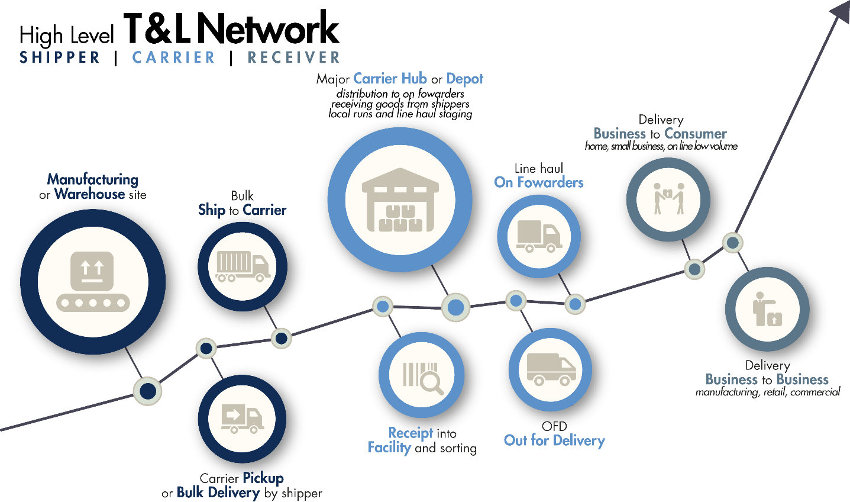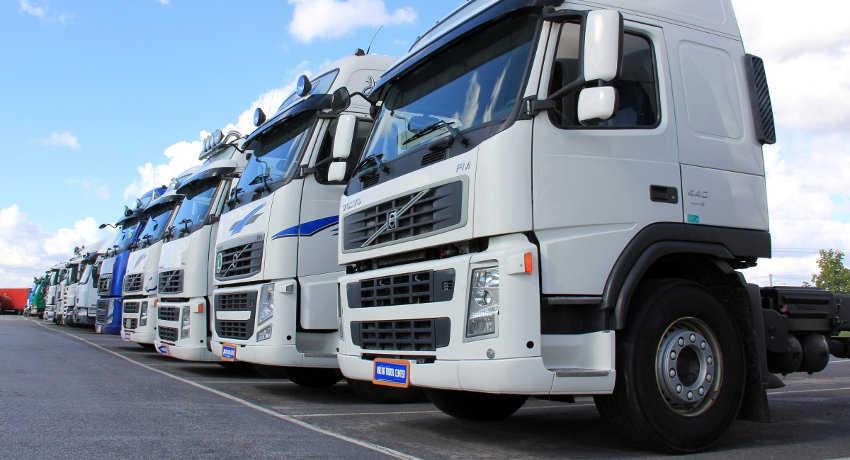The Tempo Platform has been design for first concepts to deliver visibility across a transport and logistics network. From job dispatch and freight allocation to all the standard and not standard process a driver may need to carry out in the field.
The product can be configured, by you, to specifically match your business process and the terminology you use.
Network and processes

The diagram above gives a high level view of a network and the typical data capture points. Across a national network, depending on the services provided, a carrier will scan freight between 3 and 10 times to give a clear view of the location and state of the freight. The following are points where freight is handled by a person or machine and so can be easily scanned so cost is not needlessly introduced to the network.
Within a typical Transport and Logistics Network, Tempo is used for process control and event tracking at the following points, these are examples only: Exceptions are managed across each of the processes within the network including: The above configuration of events and processes just one example configuration of Tempo.

